10 Most Impressive Ancient Aqueducts In The World
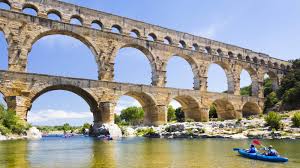
The Latin words aqua, which means water, and ducere, which means to lead, give rise to the word aqueduct. Therefore, the best way to describe an aqueduct is as an artificial structure that moves water from one remote location to another, such as a channel, tunnel, or ditch.
Ancient civilizations like those in Babylon, Assyria, and Egypt built the very first aqueducts. These crude aqueducts were simply constructed as open canals dug between a city and a river. However, the Romans were the most well-known aqueduct engineers of any ancient civilization. The ancient aqueducts that supplied their capital with water and many others throughout their empire were built by the Romans over a 500-year period.
10 Most Impressive Ancient Aqueducts
- Pont du Gard
- Aqueduct of Segovia
- Valens Aqueduct
- Les Ferreres Aqueduct
- Aqueduct of The Miracles
- Hampi Aqueducts
- Nazca Aqueducts
- Caesarea Aqueduct
- Aqueduct Park
- Tambomachay
10. Tambomachay
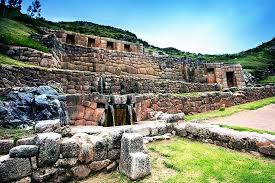
Tambomachay, also known as The Bath of the Inca, is a Peruvian archaeological site close to Cusco. The terraced rocks are traversed by a series of ancient aqueducts, canals, and waterfalls that originate from nearby thermal springs.
Many of the Inca sites in the Sacred Valley have prominent features such as baths and aqueducts, indicating that the use of water and washing seemed to be an important part of life for the Incans. It is now believed that Tambomachay had a spa because bathing seems to have been such a big part of life there.
9. Aqueduct Park

Aqueduct Park In order to bring water from as far away as 92 kilometers (57 miles) to Rome over the course of 500 years (from 312 BC to 226 AD), eleven Roman aqueducts were constructed. Although only about 48 kilometers (30 miles) of the aqueduct system were constructed of stone arches, the remaining 415 kilometers (258 miles) were comprised of underground tunnels.
READ ALSO » Top 10 Most Useful Ancient Gadgets In History
Seven ancient aqueducts are preserved in the Aqueduct Park: Tepula, Mariana, Claudio, Iulia, and Felice, as well as Marcio and Anio Novus The Aqua Claudio is the most impressive of these. It was constructed around 52 AD and stood 28 meters (92 feet) tall.
8. Caesarea Aqueduct

Caesarea was King Herod the Great's important port city built between 23 and 13 BC. From springs 10 kilometers (six miles) away, the city received running water via the aqueduct. When the city was founded, Herod constructed the initial aqueduct.
In the second century AD, the Romans extended the ancient aqueduct. This section doubled the capacity of the older aqueduct by tapping into it. For 1200 years, the aqueduct supplied water. It has been fixed multiple times over the years.
7. Nazca Aqueducts
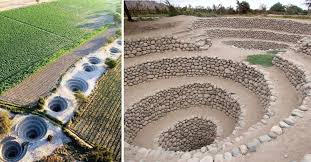
The Nazca people constructed the Nazca Aqueducts between the third and sixth centuries AD in order to withstand the arid desert climate. Using man-made underground channels, water from aquifers was moved to where it was needed.
Direct access to the water and the underground channel for maintenance was made possible by providing narrow paths that led down to these channels below. These wells, tunnels, and trenches are collectively referred to as puquios and are still utilized by the valley's inhabitants. The puquios in Cantalloc are some of the best preserved.
6. Hampi Aqueduct
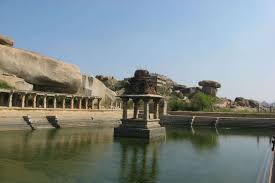
Hampi was the capital of the Vijayanagar empire in India in the 14th century. The ancient aqueducts and canals that supplied the tanks and baths with water from the Tungabhadra river are still visible around Hampi.
Underground aqueducts typically supplied the temples with water. The Stepped Tank, a water reservoir with a depth of 7 meters (23 feet), received water from one of the main branches of the aqueduct. In fact, the Stepped Tank was discovered because this aqueduct branch seemed to go nowhere. The tank emerged after archaeologists dug the ground at its terminus.
5. Aqueduct of the Miracles
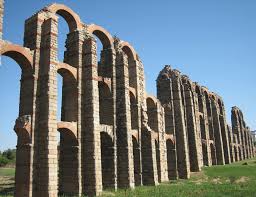
READ ALSO » Top 10 Most Outdated Ancient Medical Treatments
The Aqueduct of the Miracles, also known as the de los Milagros, is one of three ancient Roman aqueducts that were constructed in Mérida, which is now in modern-day Spain. In the beginning, it supplied the city with water from an artificial lake that was fed by the river Aberregas, which is approximately 5 kilometers (3 miles) to the north-west of Mérida.
It is believed that the aqueduct was built in the first century AD. Because of the awe it evoked, the people of Mérida gave it the name Aqueduct of the Miracles in later centuries.
4. Les Ferreres Aqueduct
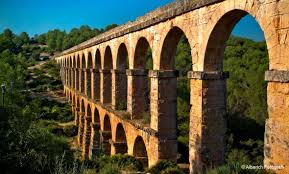
The Les Ferreres Aqueduct, also known as the Devil's Bridge or Pont del Diable, was constructed to transport water from the Francoli water 15 kilometers (9 miles) south to the city of Tarragona, which is now part of Spain. It probably originated during Augustus' reign, the first Roman Emperor. The Roman aqueduct has a length of 249 meters and a maximum height of 27 meters. There were 25 upper arches and 11 lower arches in it.
3. Valens Aqueduct
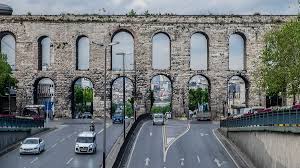
The Valens Aqueduct was built in 368 AD, during the time that the Roman Emperor Valens, after whom it is named, was in power. It was merely one of the termini of an ancient network of canals and aqueducts in Constantinople, which is now Istanbul, Turkey. The longest water system ever constructed in antiquity was eventually over 250 kilometers (155 miles) long.
The Valens Aqueduct, which was restored by several Ottoman sultans, was Constantinople's primary water supply system in medieval times. The remaining section is about 50 meters shorter than the original length, which is 921 meters (3021 feet). The Atatürk lane passes under its curves.
2. Aqueduct of Segovia
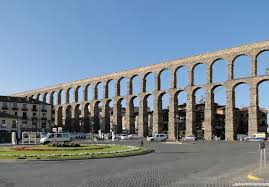
The Aqueduct of Segovia is one of Spain's best-preserved Roman structures and was probably constructed around 50 AD. The ancient aqueduct, which was constructed without the use of mortar and carries water 16 kilometers (10 miles) from the Fro River to Segovia, was built of approximately 24,000 massive granite blocks.
The part above ground is 728 meters (2,388 feet) long and has 165 arches that are higher than 9 meters (30 feet). It still supplies the city with water in the 20th century and is Segovia's most prominent symbol.
1. Pont du Gard
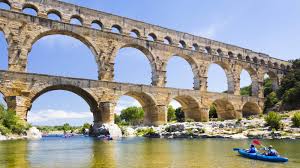
The Pont du Gard, which means bridge of the Gard, is an ancient Roman aqueduct in the south of France. It was originally a part of a 50-kilometer (31-mile) canal that brought fresh water to Nimes, a Roman city. Mortar was never used in the construction of the Roman aqueduct.
READ ALSO » Top 10 Most Famous Ancient Greek Gods In History
The stones of the aqueduct, some of which weigh up to six tons, were precisely cut to fit together, so mortar was not required. The ancient aqueduct was used as a traditional bridge to make it easier for people to walk across the river from the Middle Ages to the 18th century. With 1.4 million visitors in 2001, the Pont du Gard is now one of France's top five tourist attractions.
